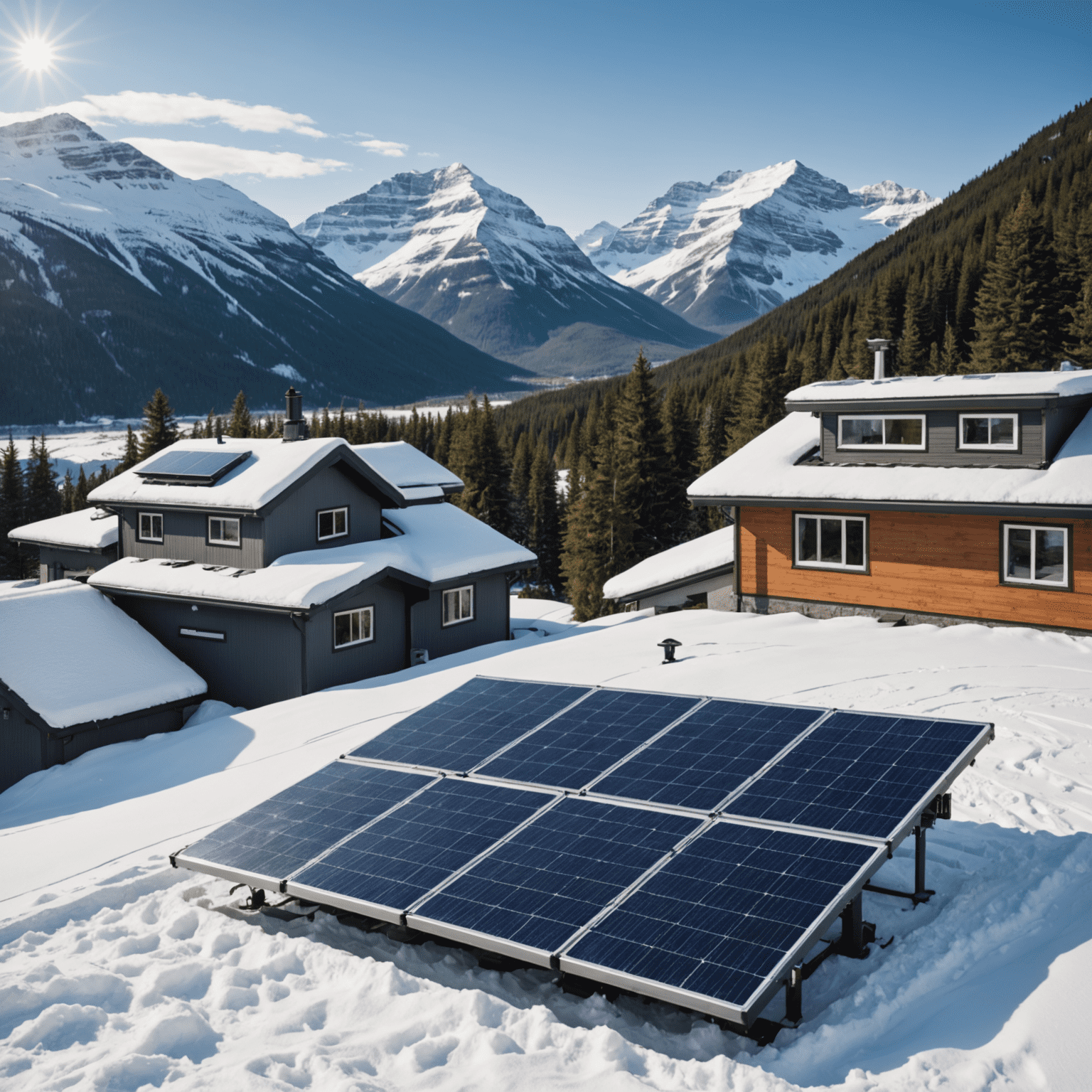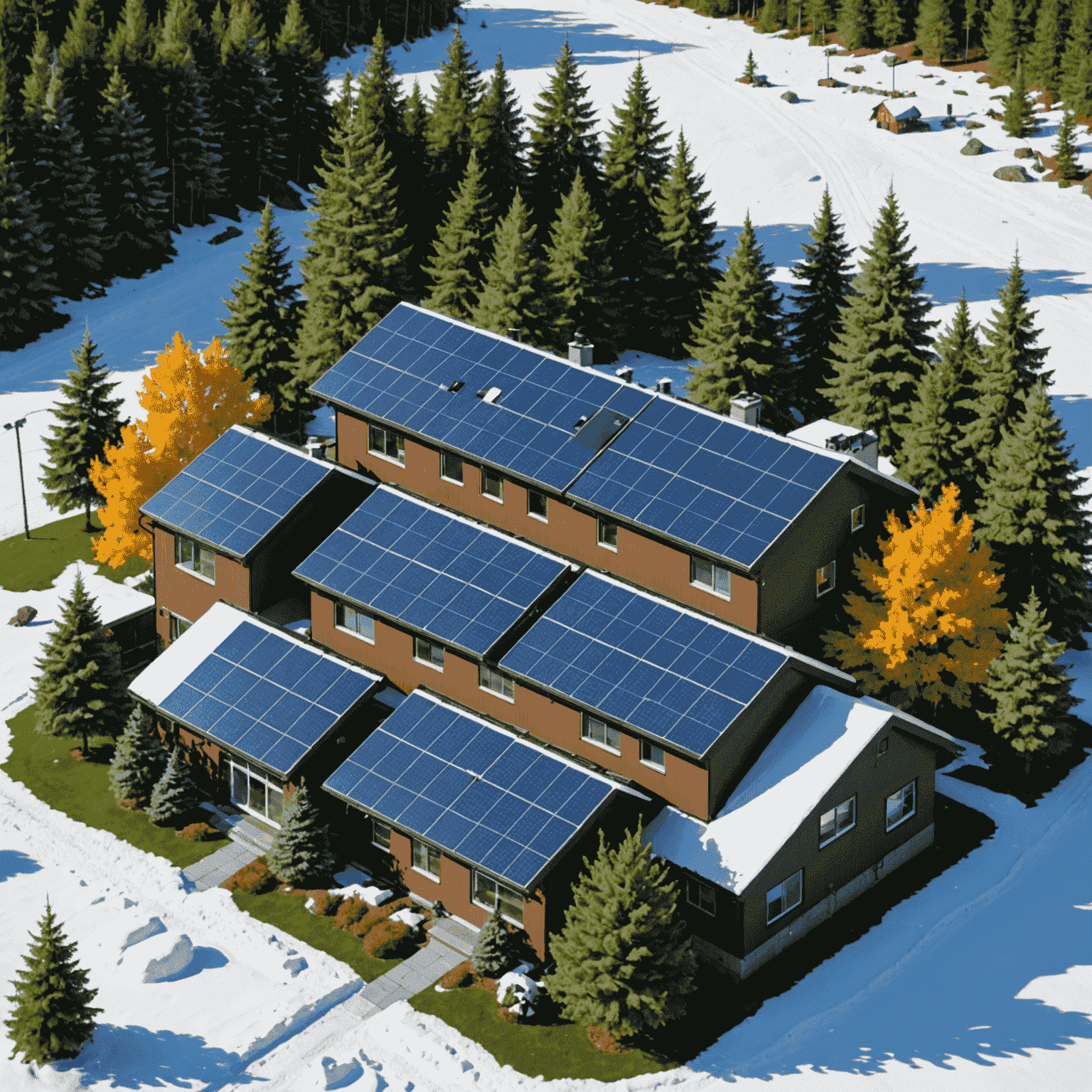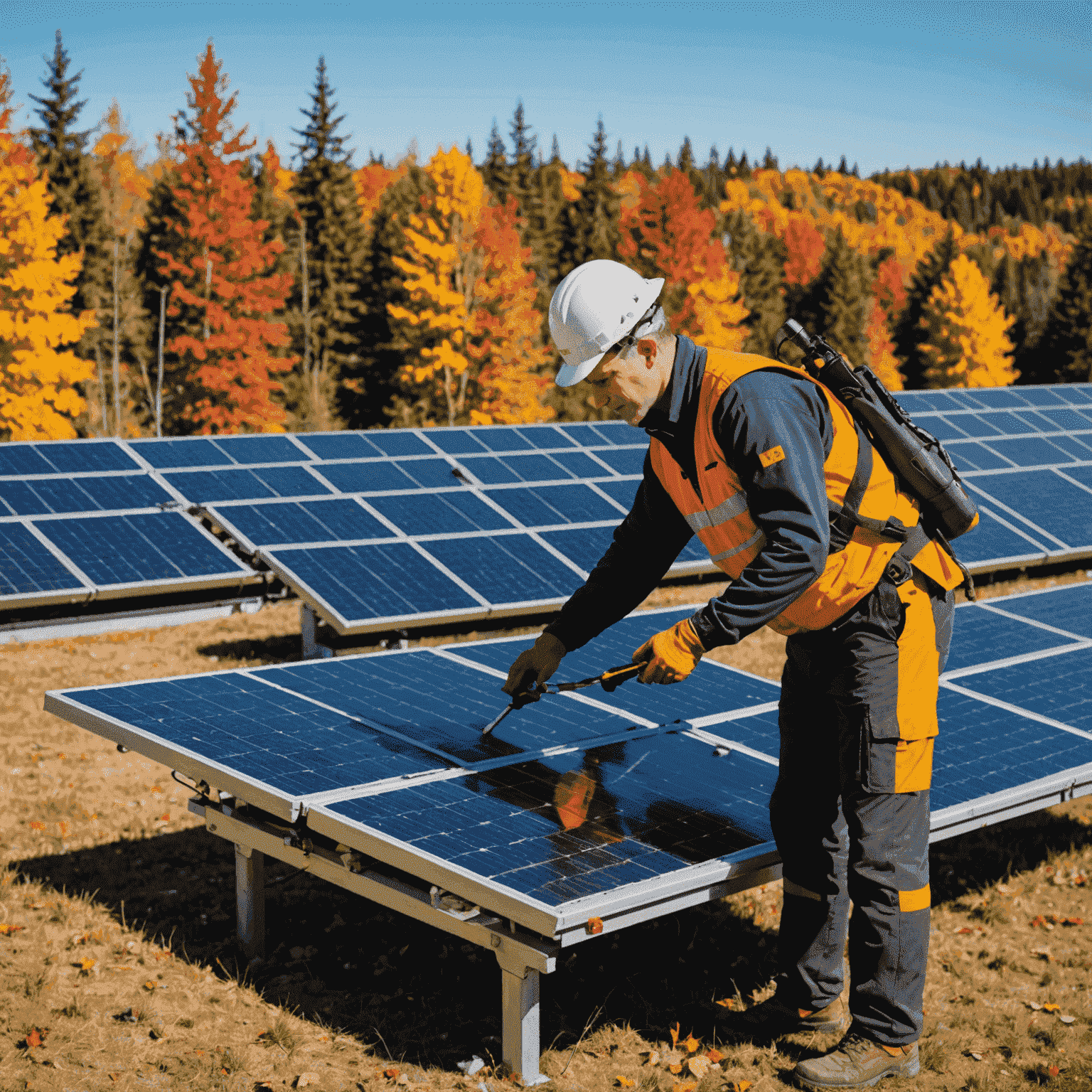Maximizing Solar Efficiency in Canadian Climate

Canada's diverse climate presents unique challenges and opportunities for solar energy adoption. This guide offers valuable insights on optimizing solar panel performance across the country's varied weather conditions.
1. Choosing the Right Solar Panels
When selecting solar panels for Canadian weather, consider:
- High-efficiency monocrystalline panels for maximum energy production
- Panels with excellent low-light performance for cloudy days
- Durable panels with strong frames to withstand snow loads
2. Optimal Panel Placement
To maximize solar efficiency in Canada:
- Install panels at a steeper angle (around 40-45 degrees) to optimize for winter sun
- Face panels south for maximum exposure
- Consider adjustable mounts to change tilt seasonally

3. Snow Management Strategies
To deal with snow accumulation:
- Install panels with a smooth surface to encourage snow sliding off
- Use snow rakes designed for solar panels to safely remove heavy snow
- Consider heating elements for critical areas to prevent ice dams
4. Temperature Considerations
Manage temperature effects on solar efficiency:
- Choose panels with low temperature coefficients for better cold-weather performance
- Ensure proper ventilation behind panels to prevent overheating in summer
- Monitor inverter performance in extreme temperatures
5. Maintenance for Canadian Conditions
Regular maintenance is crucial:
- Conduct bi-annual inspections (spring and fall)
- Clean panels after pollen season and before winter
- Check for and repair any damage from ice or falling branches

6. Leveraging Technology
Enhance system performance with:
- Smart monitoring systems to track performance and detect issues
- Microinverters or power optimizers for better shade tolerance
- Battery storage to maximize self-consumption and provide backup power
Conclusion
By implementing these strategies, Canadian homeowners and businesses can significantly boost their solar panel efficiency, making the most of this clean energy source despite challenging weather conditions. With proper planning and maintenance, solar power can be a reliable and efficient energy solution across Canada's diverse climate zones.